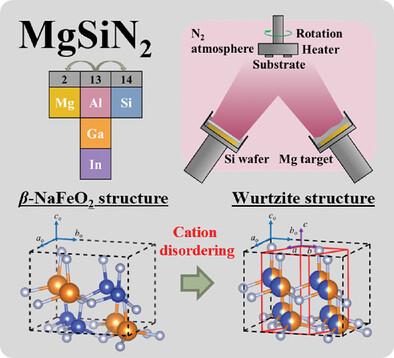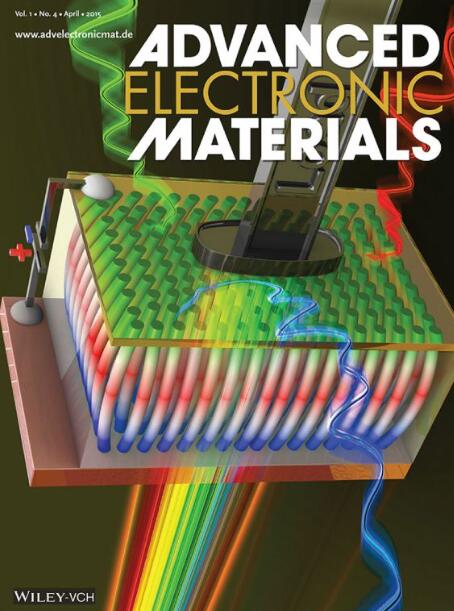Realization of Non-Equilibrium Wurtzite Structure in Heterovalent Ternary MgSiN2 Film Grown by Reactive Sputtering
IF 5.3
2区 材料科学
Q2 MATERIALS SCIENCE, MULTIDISCIPLINARY
引用次数: 0
Abstract
The piezoelectric and ferroelectric applications of heterovalent ternary materials are not well explored. Epitaxial MgSiN2 films are grown at 600 °C on (111)Pt//(001)Al2O3 substrates by the reactive sputtering method using metallic Mg and Si under the N2 atmosphere. Detailed X-ray diffraction measurements and transmission electron microscopy observations revealed that the epitaxially grown films on the substrates have a hexagonal wurtzite structure with c-axis out-of-plane orientation. The random occupation of this structure by Mg and Si differs from that of the previously reported structure in which these two cations periodically occupy the cationic sites. However, the lattice spacings closely approximate those that are previously reported, irrespective of the ordering, and they are almost comparable with those of (Al0.8Sc0.2)N. The wide bandgap of >5.0 eV in deposited MgSiN2 is compatible with that of AlN and suggests durability against the application of strong external electric fields, possibly to induce polarization switching. In addition, MgSiN2 is shown to have piezoelectric properties with an effective d33 value of 2.3 pm V−1 for the first time. This work demonstrates the compositional expansion of hexagonal wurtzite to heterovalent ternary nitrides for novel piezoelectric materials, whose ferroelectricity is expected.

求助全文
约1分钟内获得全文
求助全文
来源期刊

Advanced Electronic Materials
NANOSCIENCE & NANOTECHNOLOGYMATERIALS SCIE-MATERIALS SCIENCE, MULTIDISCIPLINARY
CiteScore
11.00
自引率
3.20%
发文量
433
期刊介绍:
Advanced Electronic Materials is an interdisciplinary forum for peer-reviewed, high-quality, high-impact research in the fields of materials science, physics, and engineering of electronic and magnetic materials. It includes research on physics and physical properties of electronic and magnetic materials, spintronics, electronics, device physics and engineering, micro- and nano-electromechanical systems, and organic electronics, in addition to fundamental research.
 求助内容:
求助内容: 应助结果提醒方式:
应助结果提醒方式:


